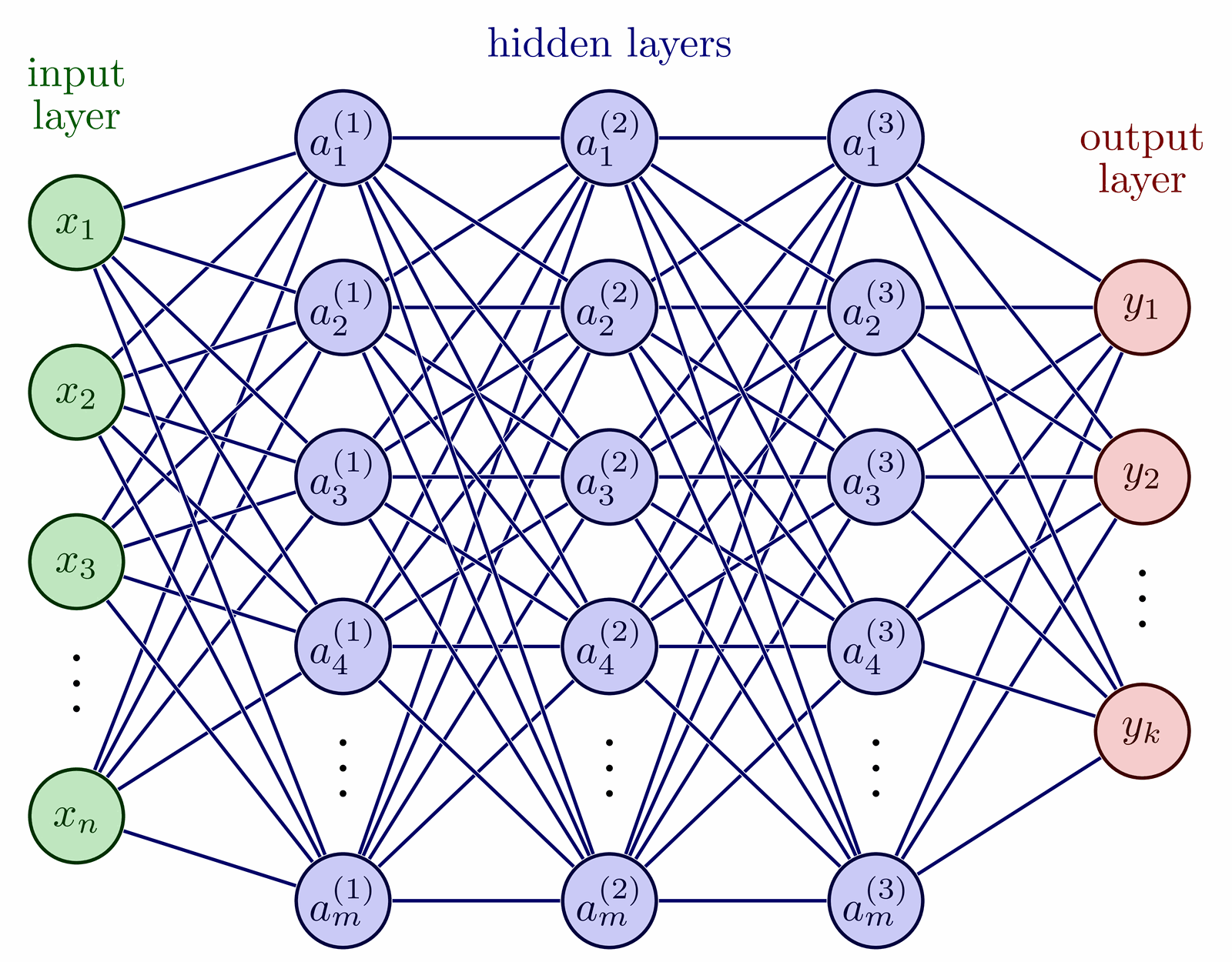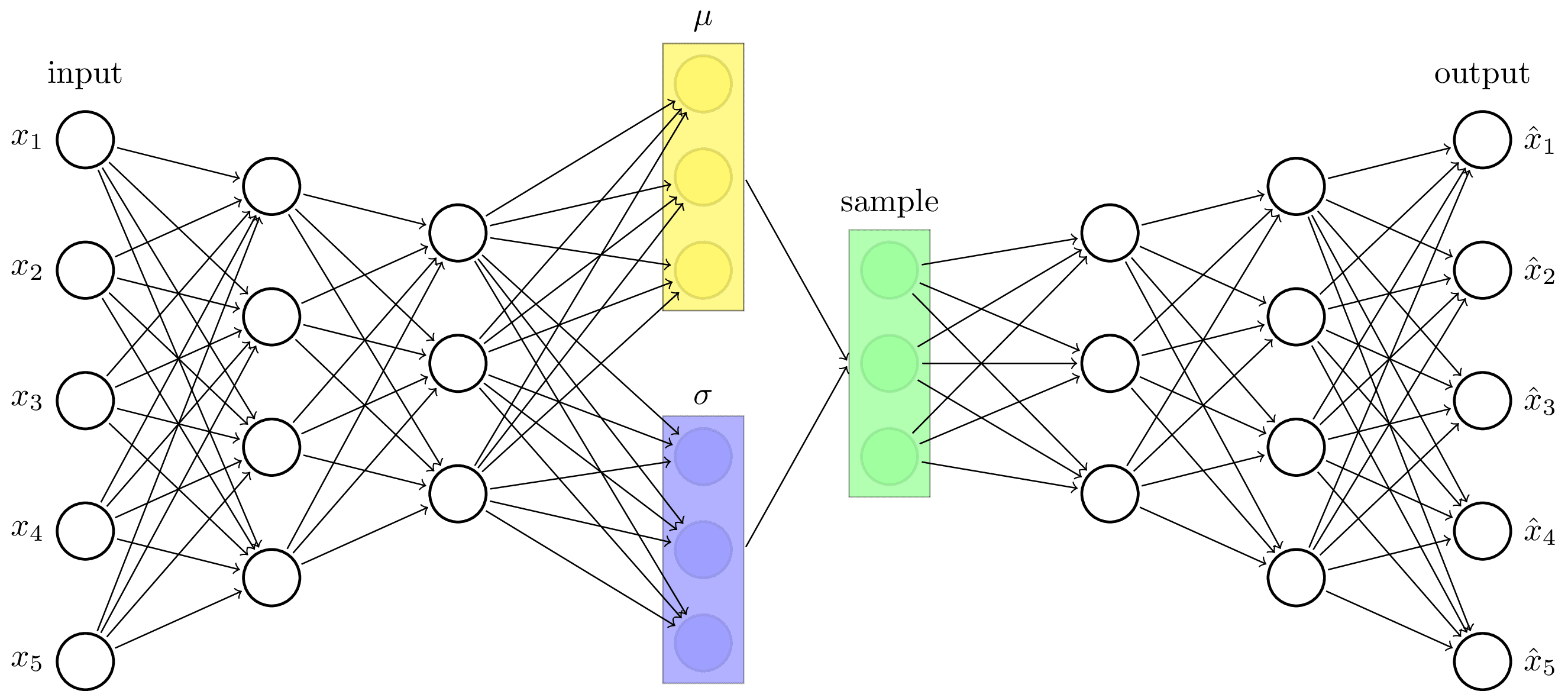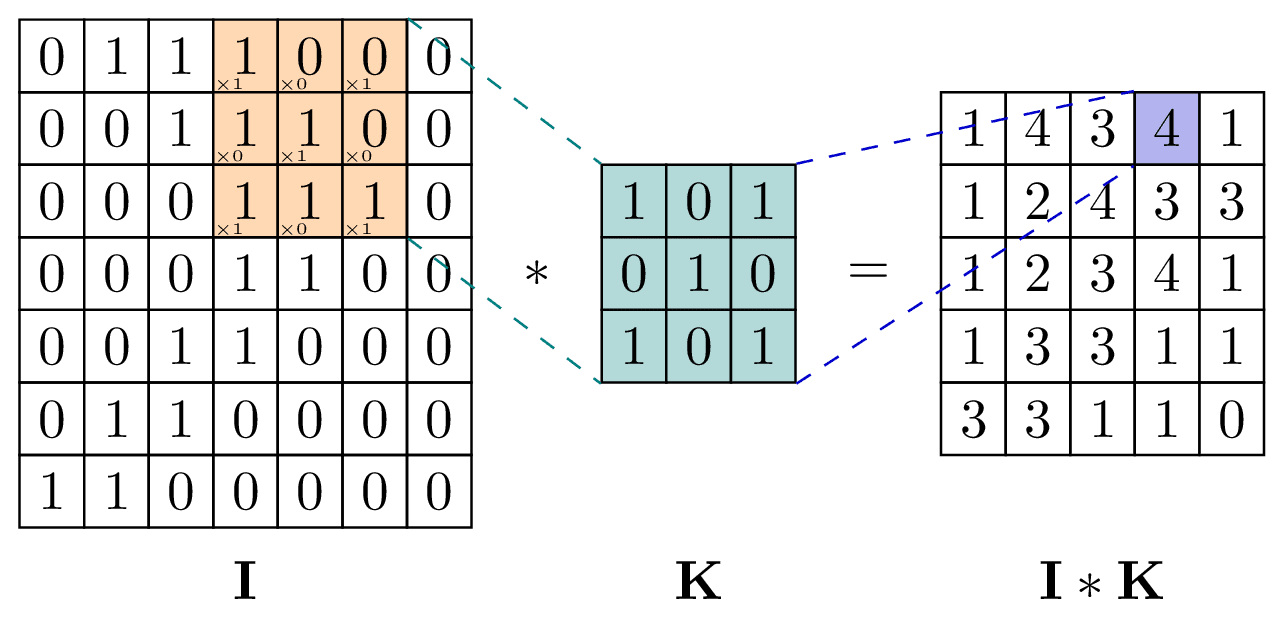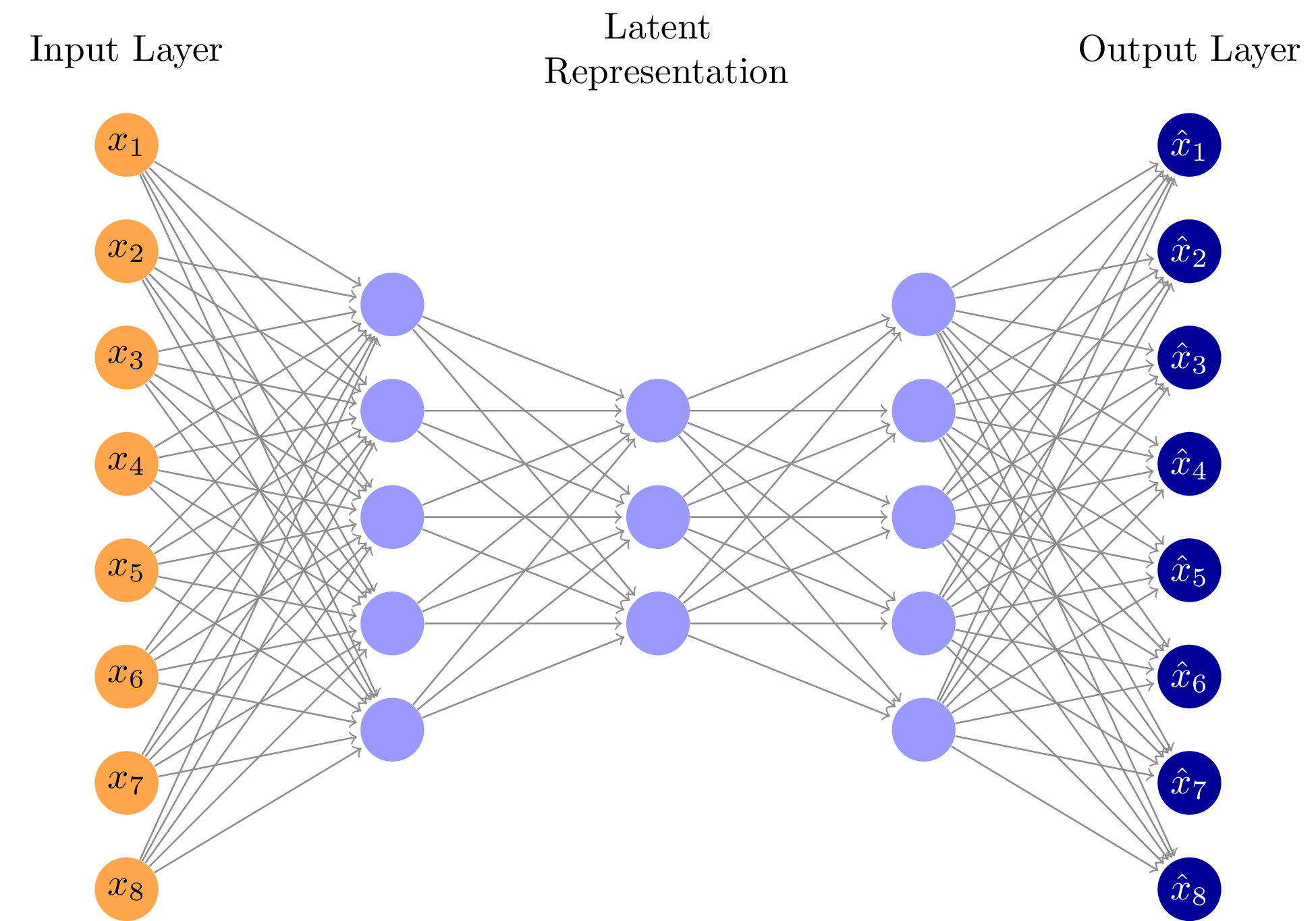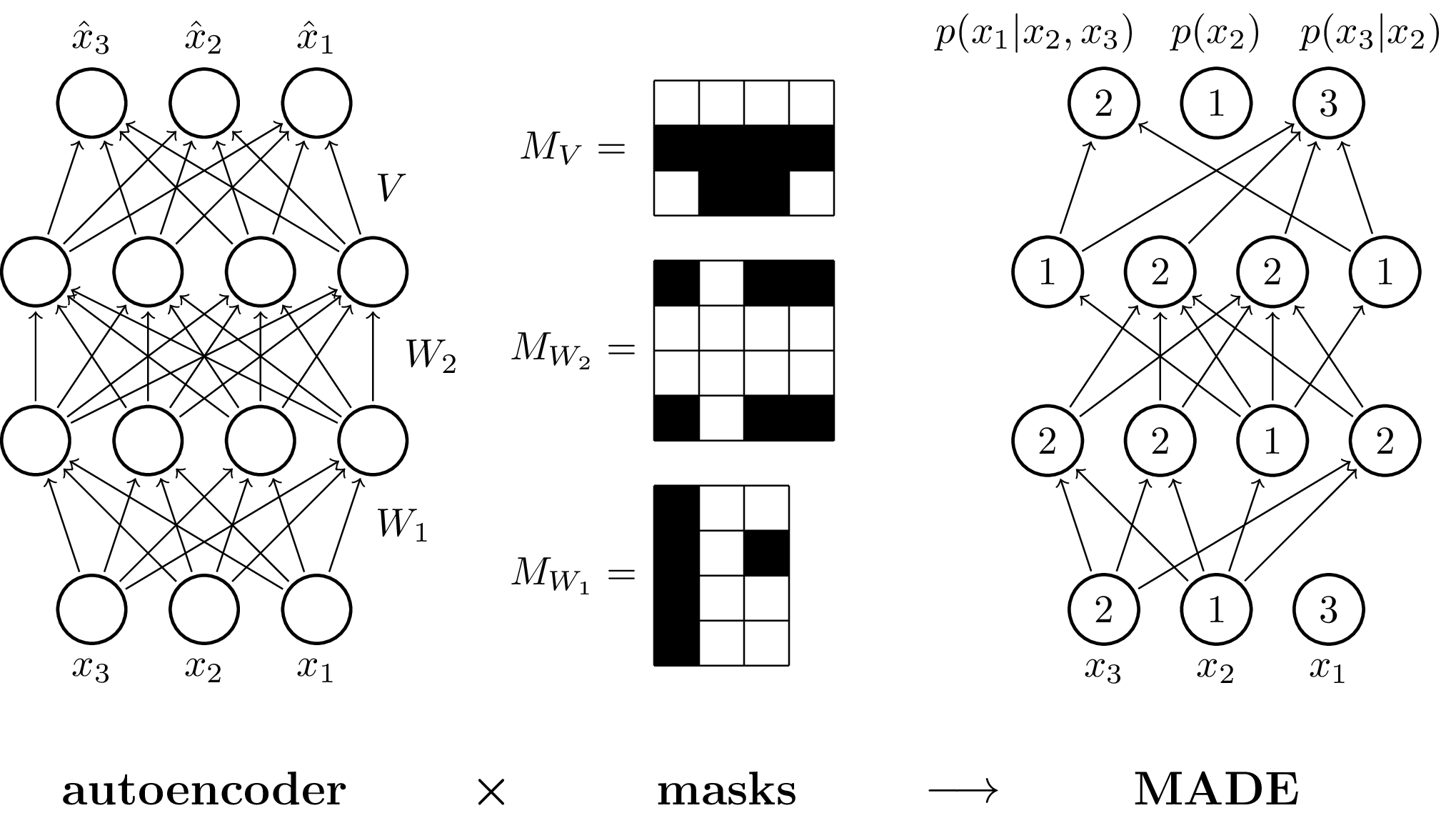Edit and compile if you like:
\documentclass[tikz]{standalone}
\usetikzlibrary{positioning}
\def\layersep{2}
\def\nodesep{1.5}
\begin{document}
\begin{tikzpicture}[
node/.style={circle, draw, thick},
]
\foreach \y in {1,...,5}{
\node[node] (i\y) at (0,\nodesep*\y) {};
\node[node, right=\layersep of i\y] (h1\y) {};
\node[node, right=\layersep of h1\y] (h2\y) {};
}
\node[node, right=\layersep of h22] (o1) {};
\node[node, right=\layersep of h24] (o2) {};
\foreach \source in {1,...,5}
\foreach \dest in {1,...,5}{
\path[-stealth, thick] (i\source) edge (h1\dest);
\path[-stealth, thick] (h1\source) edge (h2\dest);
}
\foreach \source in {1,...,5}
\foreach \dest in {1,2}
\draw[-stealth, thick] (h2\source) -- (o\dest);
\draw[-stealth, thick] (7.5,3*\nodesep) -- node[above,font=\Large\bfseries] {dropout} (9.5, 3*\nodesep);
% Boundary
\foreach \y in {1,...,5}
\node[node, right=15em of h2\y] (di\y) {};
\node[red,font=\huge] at (di1) {$\times$};
\node[red,font=\huge] at (di3) {$\times$};
\foreach \y in {1,...,5}
\node[node, right=\layersep of di\y] (dh1\y) {};
\node[red,font=\huge] at (dh11) {$\times$};
\node[red,font=\huge] at (dh13) {$\times$};
\node[red,font=\huge] at (dh14) {$\times$};
\foreach \y in {1,...,5}
\node[node, right=\layersep of dh1\y] (dh2\y) {};
\node[red,font=\huge] at (dh22) {$\times$};
\node[red,font=\huge] at (dh24) {$\times$};
\node[node, right=\layersep of dh22] (do1) {};
\node[node, right=\layersep of dh24] (do2) {};
\foreach \source in {2,4,5}
\foreach \dest in {2,5}
\draw[-stealth, thick] (di\source) -- (dh1\dest);
\foreach \source in {2,5}
\foreach \dest in {1,3,5}
\draw[-stealth, thick] (dh1\source) -- (dh2\dest);
\foreach \source in {1,3,5}
\foreach \dest in {1,2}
\draw[-stealth, thick] (dh2\source) -- (do\dest);
\end{tikzpicture}
\end{document}
Click to download: dropout.tex
Open in Overleaf: dropout.tex
This file is available on tikz.netlify.app and on GitHub and is MIT licensed.
See more on the author page of Janosh Riebesell..



